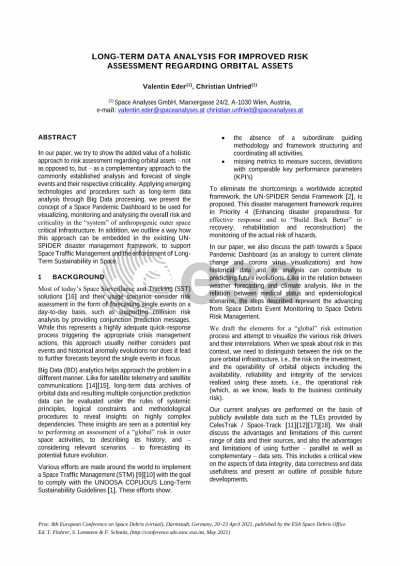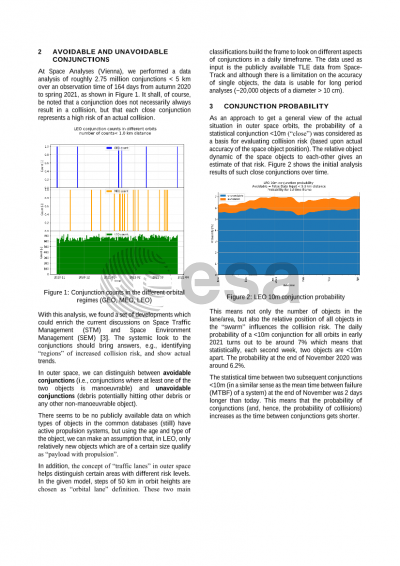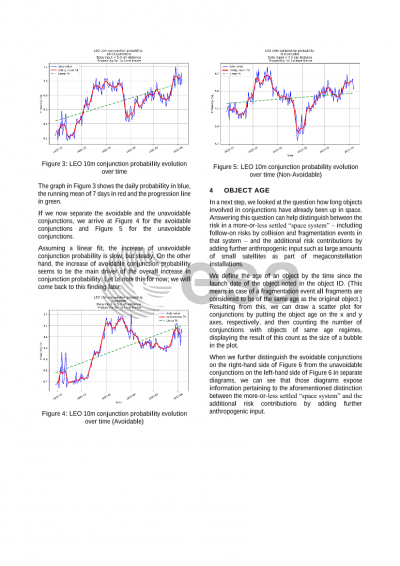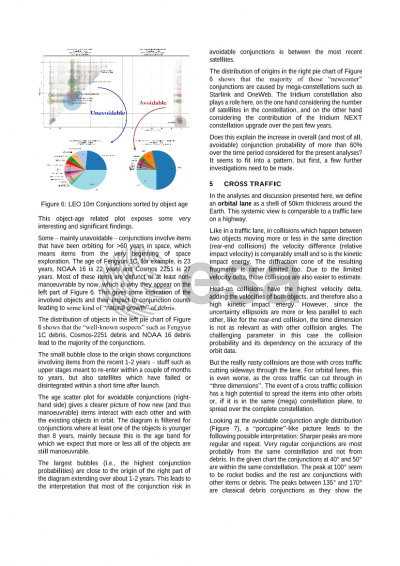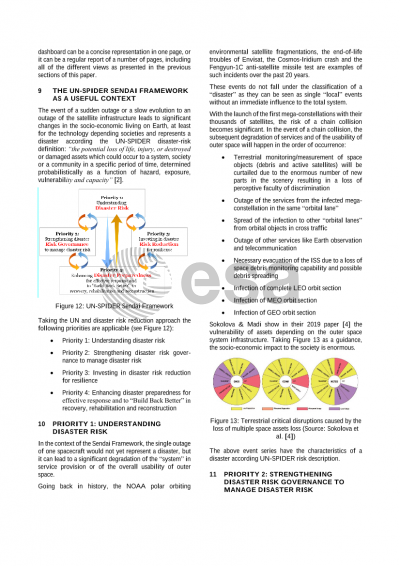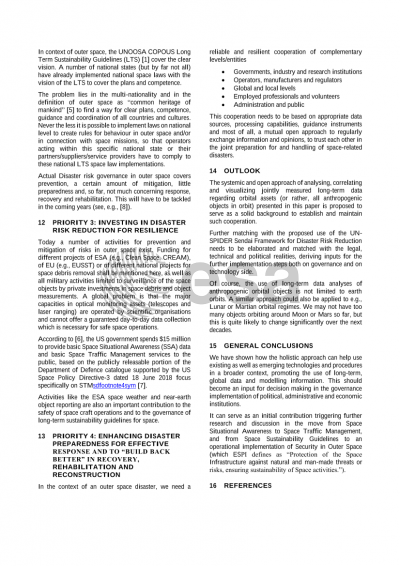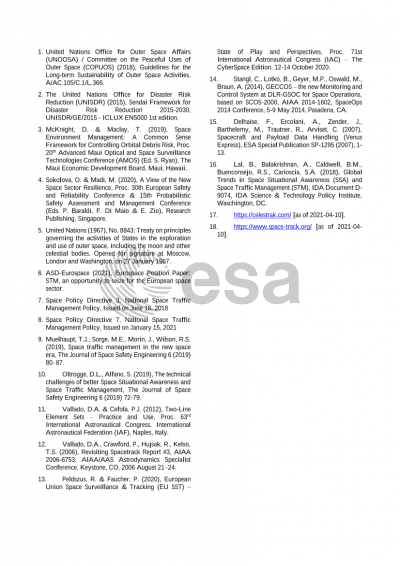Document details

Abstract
Most of today’s Space Surveillance and Tracking (SST) solutions and their usage scenarios consider risk assessment in the form of forecasting single events on a day-to-day basis, such as supporting collision risk analysis by providing conjunction prediction messages. While this represents a highly adequate quick-response process triggering the appropriate crisis management actions, this approach usually neither considers past events and historical anomaly evolutions nor does it lead to further forecasts beyond the single events in focus.
Big Data (BD) analytics helps approach the problem in a different manner. Like for satellite telemetry and satellite communications, long-term data archives of orbital data and resulting multiple conjunction prediction data can be evaluated under the rules of systemic principles, logical constraints and methodological procedures to reveal insights on highly complex dependencies. These insights are seen as a potential key to performing an assessment of a “global” risk in outer space activities, to describing its history, and – considering relevant scenarios – to forecasting its potential future evolution.
In our presentation, we also discuss the path towards a Space Pandemic Dashboard (as an analogy to current climate change and corona virus visualizations) and how historical data and its analysis can contribute to predicting future evolutions. Like in the relation between weather forecasting and climate analysis, like in the relation between medical status and epidemiological scenarios, the steps described represent the advancing from Space Debris Event Monitoring to Space Debris Risk Management.
We draft the elements for a “global” risk estimation process and attempt to visualize the various risk drivers and their interrelations. When we speak about risk in this context, we need to distinguish between the risk on the pure orbital infrastructure, i.e. the risk on the investment, and the operability of orbital objects including the availability, reliability and integrity of the services realised using these assets, i.e. the operational risk (which, as we know, leads to the business continuity risk).
Our current analyses are performed on the basis of publicly available data such as the TLEs provided by CelesTrak. We shall discuss the advantages and limitations of this current range of data and their sources, and also the advantages and limitations of using further – parallel as well as complementary – data sets. This includes a critical view on the aspects of data integrity, data correctness and data usefulness and present an outline of possible future developments.
We will show how the holistic approach can help use existing as well as emerging technologies and procedures in a broader context, promoting the use of long-term, global data and modelling information. This should become an input for decision making in the governance implementation of political, administrative and economic institutions.
It can serve as an initial contribution triggering further research and discussion in the move from Space Situational Awareness to Space Traffic Management, and from Space Sustainability Guidelines (UNOOSA/UN CUPOUS A/AC.105/2018/CRP.20) to an operational implementation of Security in Outer Space (which ESPI defines as “Protection of the Space Infrastructure against natural and man-made threats or risks, ensuring sustainability of Space activities.”).
Preview
